Hey all! Real Farmer Jeff here.
Tomatoes are one of the most rewarding and popular crops to grow in a home garden. Their flavor, versatility in the kitchen, and wide variety make them a favorite for beginners and seasoned gardeners alike. They definitely are a personal favorite of mine!
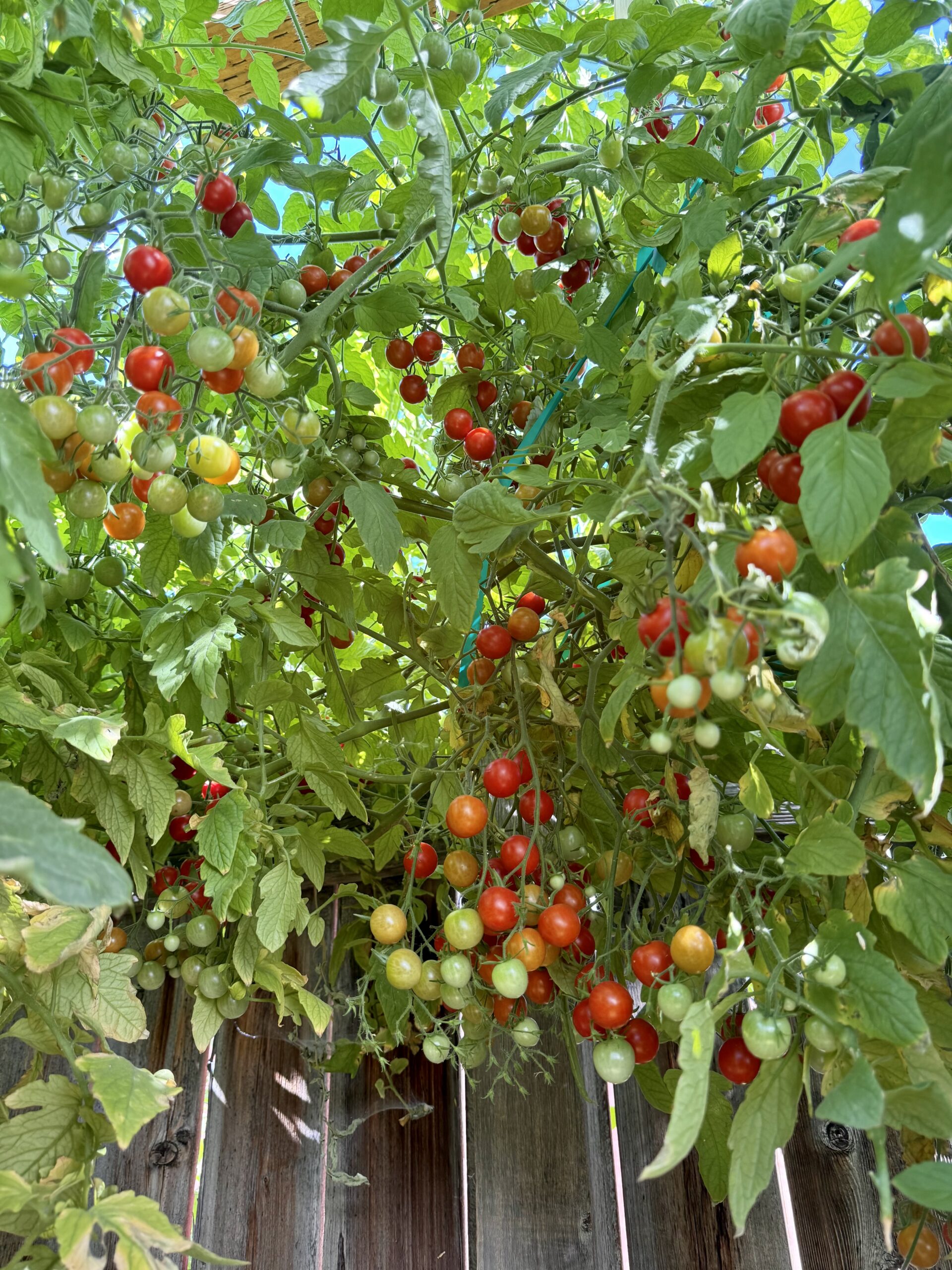
But growing healthy, high-yielding tomato plants takes more than just popping them into the ground. Success starts with knowing:
- How to space them properly to prevent overcrowding and disease
- How deep to plant for strong root development
- Which companion plants can help deter pests and boost growth
This guide dives into all of that and more. This way, you can enjoy a thriving tomato harvest all season long!
Let’s get started!
Tomato Spacing and Planting Depth
- Traditional spacing: Indeterminate tomatoes should typically be spaced 2 – 3 feet apart, while determinate varieties can be spaced slightly closer at 18 – 24 inches.
- Planting depth: Bury seedlings deeply, removing the lower leaves and planting them up to the first true leaf. This allows the stem to form additional roots and improves plant stability.
- Row spacing: Leave about 3 – 4 feet between rows to ensure good airflow and ease of access.
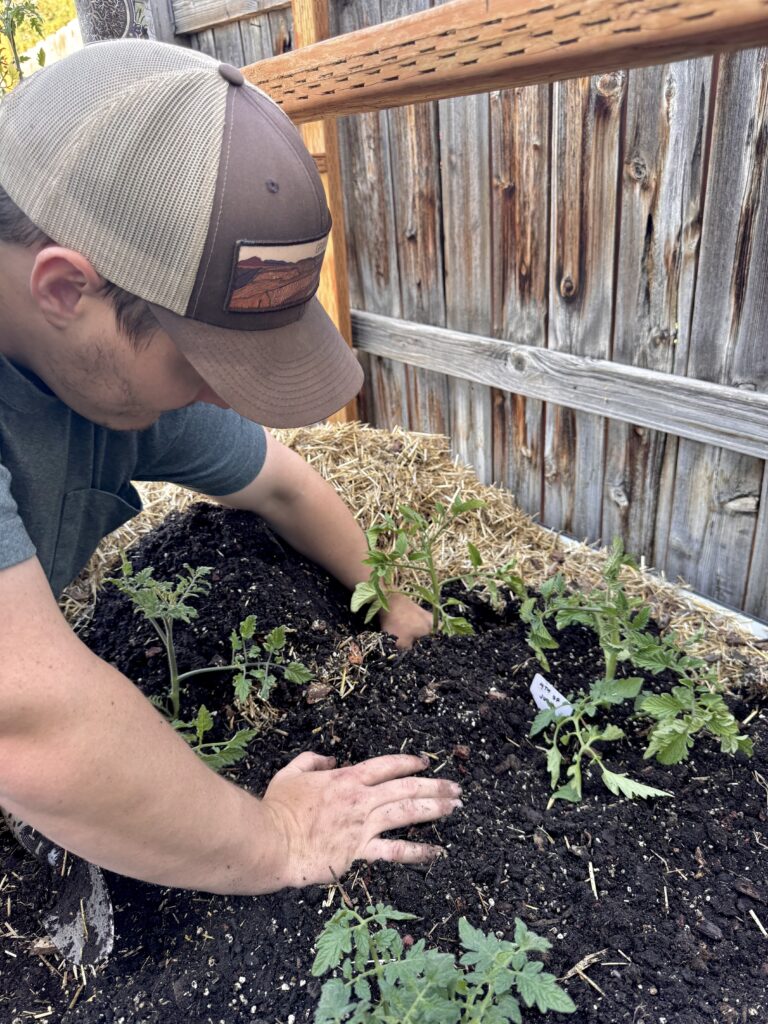
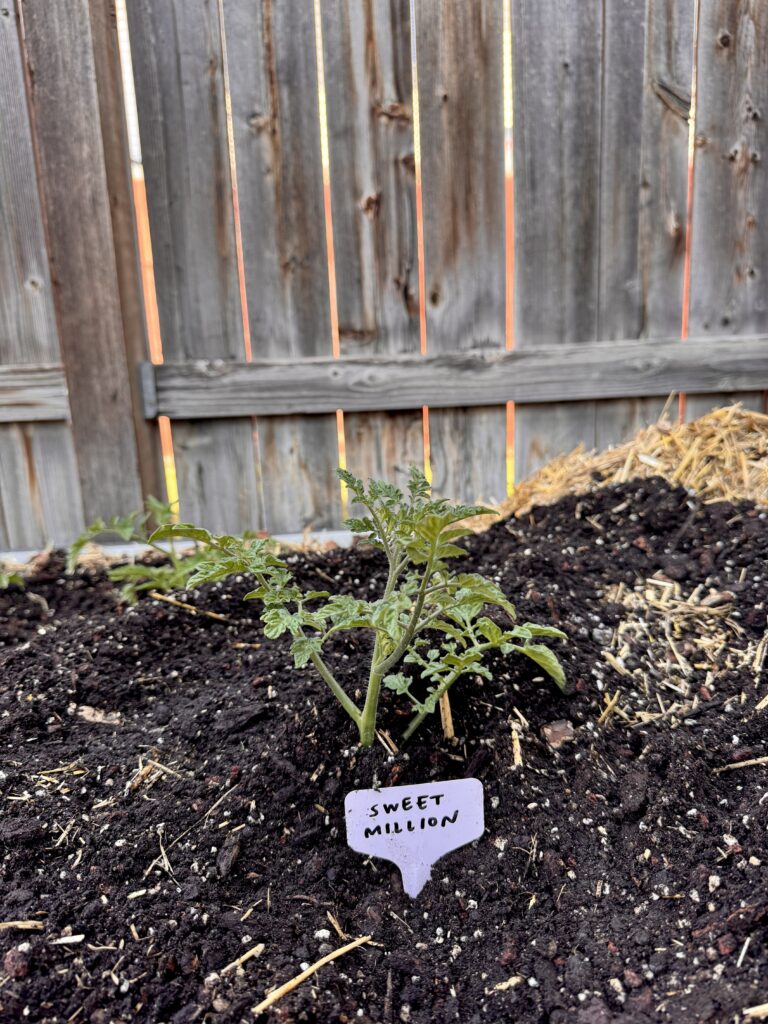
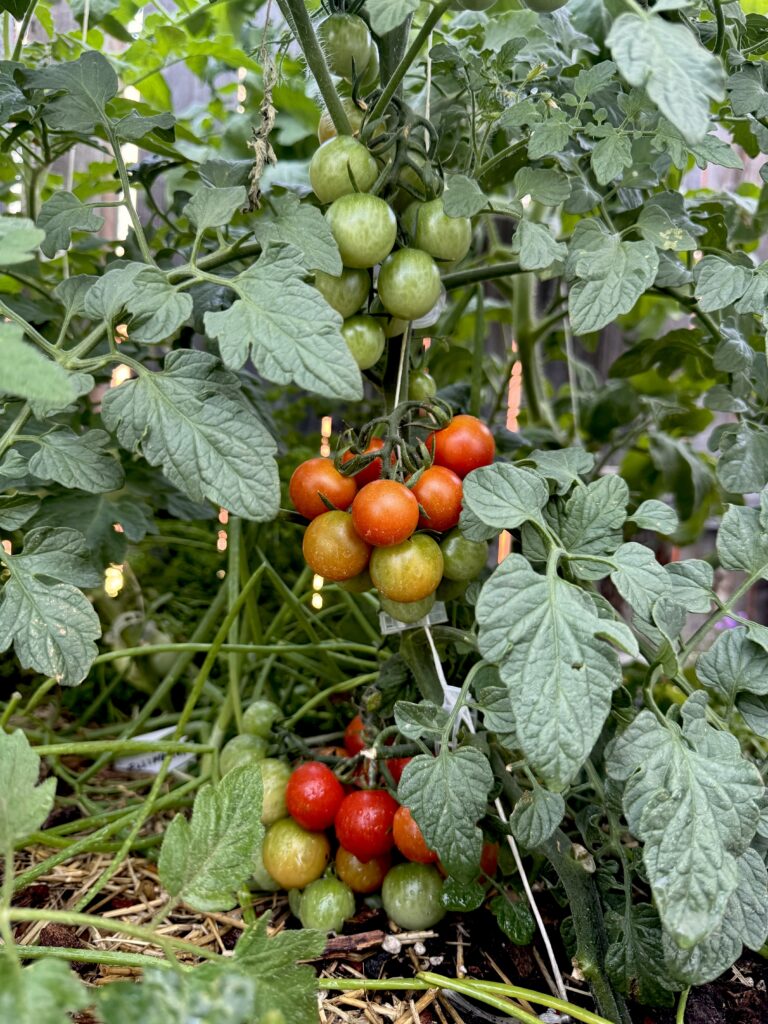
Pruning and Trellising Method
If you’re gardening in a tight space or using raised beds, consider aggressive pruning combined with vertical trellising. Note that the pruning part only applies to indeterminate tomatoes. To learn more about what that is, check out my blog post here.
Benefits of Pruning and Trellising:
- Greatly boosts yield per square foot
- Maximizes vertical space
- Increases airflow and reduces disease
- Simplifies harvesting and maintenance
Aggressive Pruning: Prune each plant to a single main stem or two at most. Remove suckers (side shoots) regularly. This keeps plants narrow, allowing for closer spacing (as close as 12 – 15 inches apart).
String Trellising: String trellising uses vertical strings attached to overhead supports, allowing tomatoes to grow upward. The main stem is wound around the string or clipped in place.
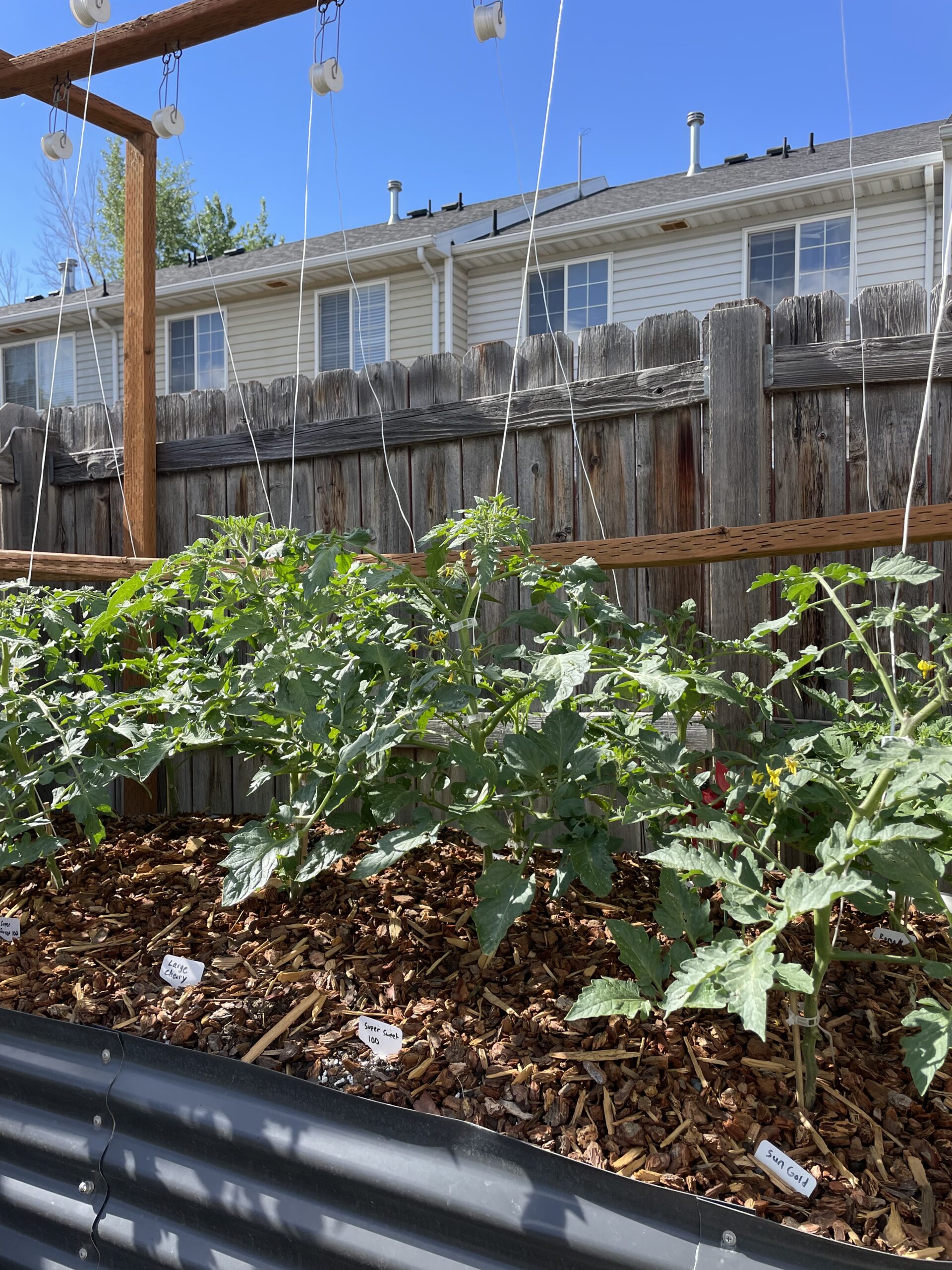
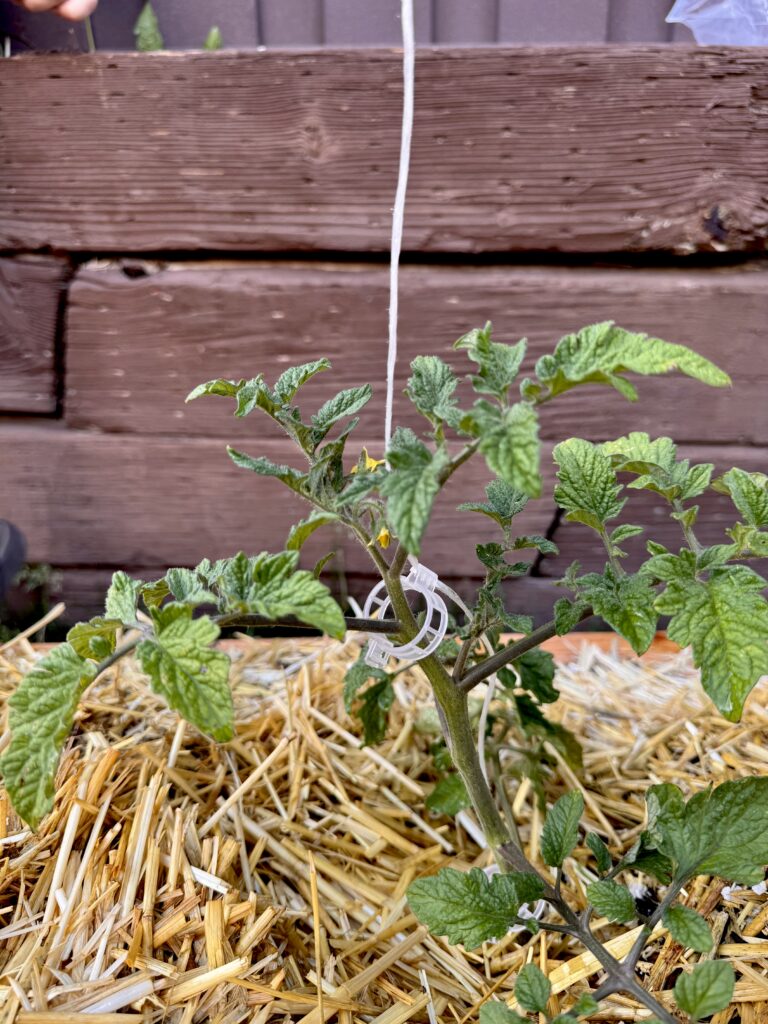
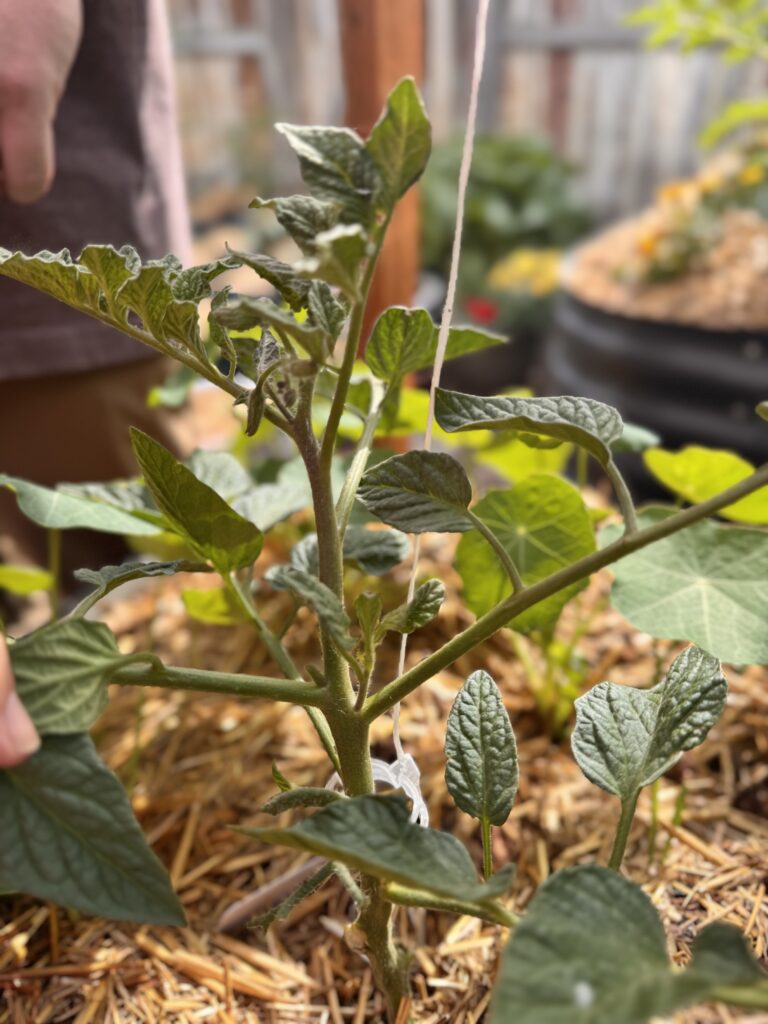
Companion Planting and Interplanting for Tomatoes
Companion planting and interplanting are two closely related strategies that enhance the health and productivity of your garden:
- Companion Planting: Focuses on the biological benefits that one plant can offer another, like repelling pests, improving flavor, or attracting beneficial insects.
- Interplanting: Planting different crops close together to make the most of your growing space, often with different root depths, growth rates, or canopy sizes.
When used together, they can create a thriving tomato patch that’s both space-efficient and ecologically balanced.
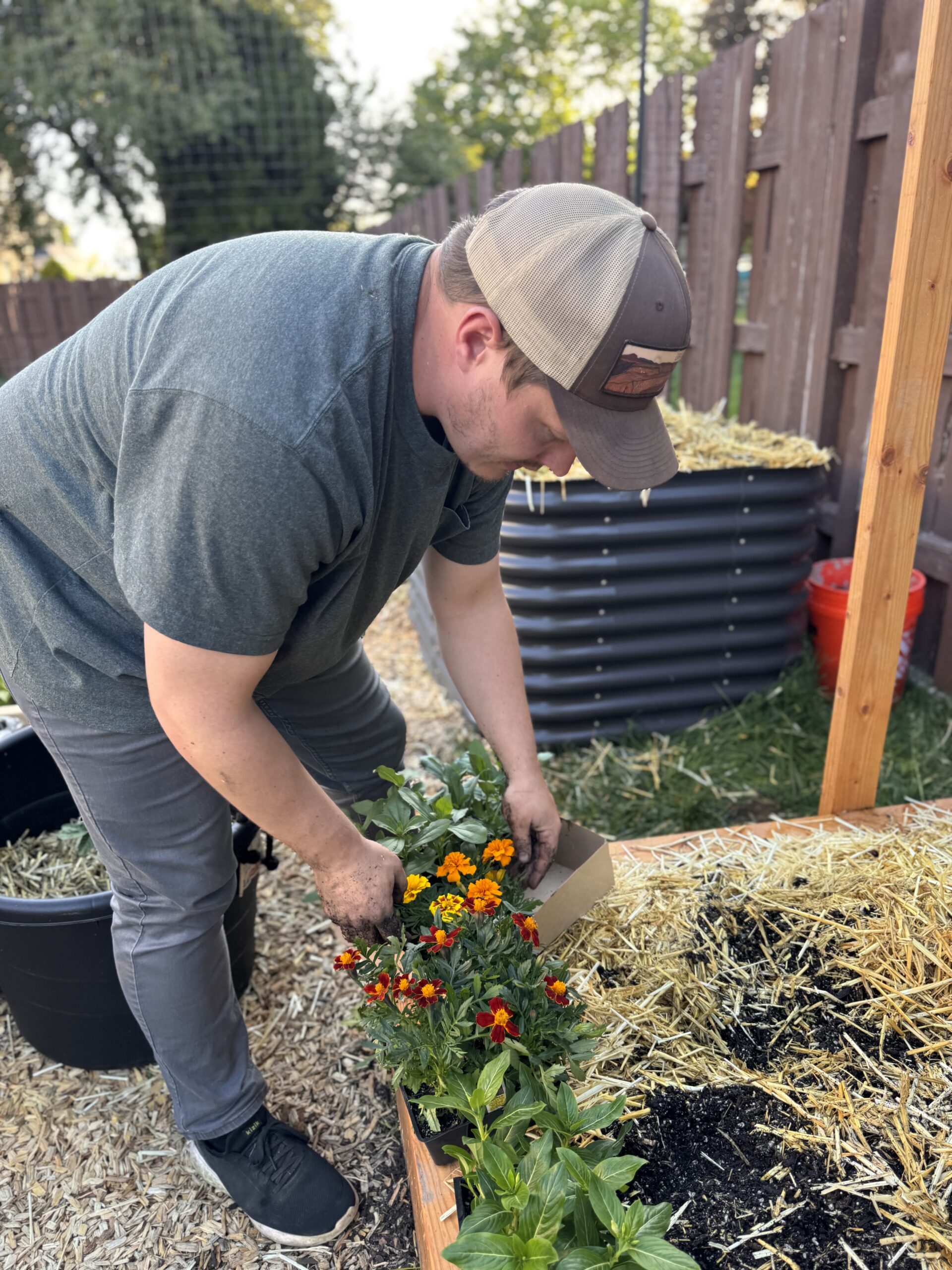
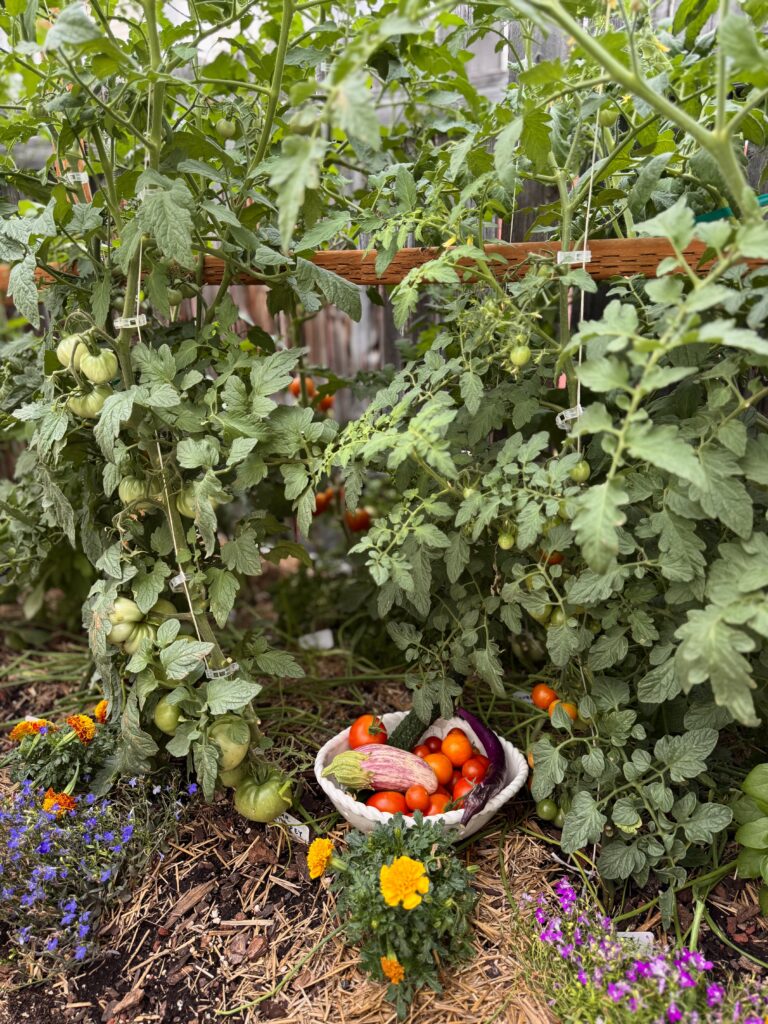
Best Companion Plants for Tomatoes
Herb Companions:
- Basil:
- Repels whiteflies and aphids; may improve flavor.
- Parsley:
- Attracts beneficial insects like hoverflies.
- Chives & Garlic:
- Natural pest deterrents due to sulfurous compounds.
- Borage:
- Attracts pollinators and deters hornworms.
Vegetable Companions:
- Lettuce & Spinach:
- Shade-tolerant and occupy lower soil layers.
- Carrots:
- Loosen soil and grow well with deep-rooted tomatoes.
- Onions & Scallions:
- Deter aphids and take up little space.
Flower Companions
- Marigolds:
- Repel root-knot nematodes and aphids.
- Nasturtiums:
- Trap crops for aphids and flea beetles.
- Calendula:
- Attracts ladybugs and parasitic wasps.
- Why Attract Parasitic Wasps?: Parasitic wasps may sound intimidating, but they’re tiny, harmless to humans, and great for pest control. Their larvae target pests like hornworms and aphids, reducing infestations naturally. They won’t harm your plants or beneficial insects, and you can attract them with flowers like alyssum, calendula, and dill.
- Attracts ladybugs and parasitic wasps.
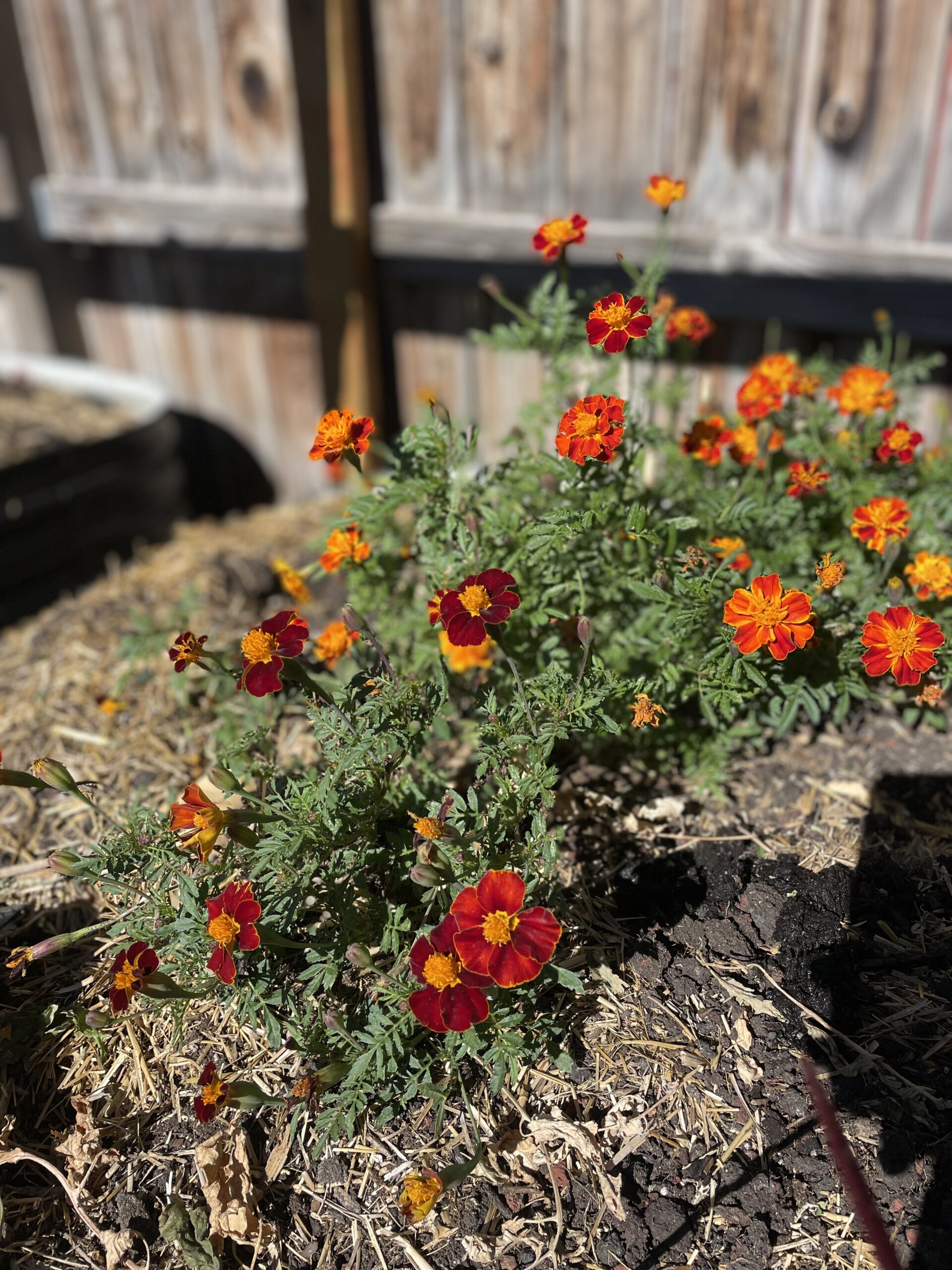
Flowers to Plant Between Tomato Plants
Pollinators improve tomato fruit set, size, and quality. Here are compact flowers you can plant directly between tomatoes:
1. Sweet Alyssum
- Low-growing, attracts hoverflies and bees
- Acts as living mulch
2. Calendula
- Upright but compact; long bloom time
- Attracts parasitic wasps and ladybugs
3. Dwarf Nasturtiums
- Sprawling, pollinator-attracting, and edible
- Great for edges or in between rows
4. Violas / Johnny-Jump-Ups
- Small, early bloomers loved by native bees
5. Chives
- Upright habit, purple blooms loved by honeybees
- Deters aphids
Thanks for reading along, guys!
If you enjoyed this blog post, be sure to check out my other gardening blog posts:
- How to Start a Garden on a Budget for Under $100
- Essential and Nice-to-Have Garden Products for Your Perfect Setup
- My Garden Setup: 3 Best Garden Containers for Every Gardener
- Understanding Garden Light and Shade: A Simple Guide
- How to Build a Homemade Trellis Using Cattle Panel
Be sure to follow me on social media for daily content and instructional videos about gardening!

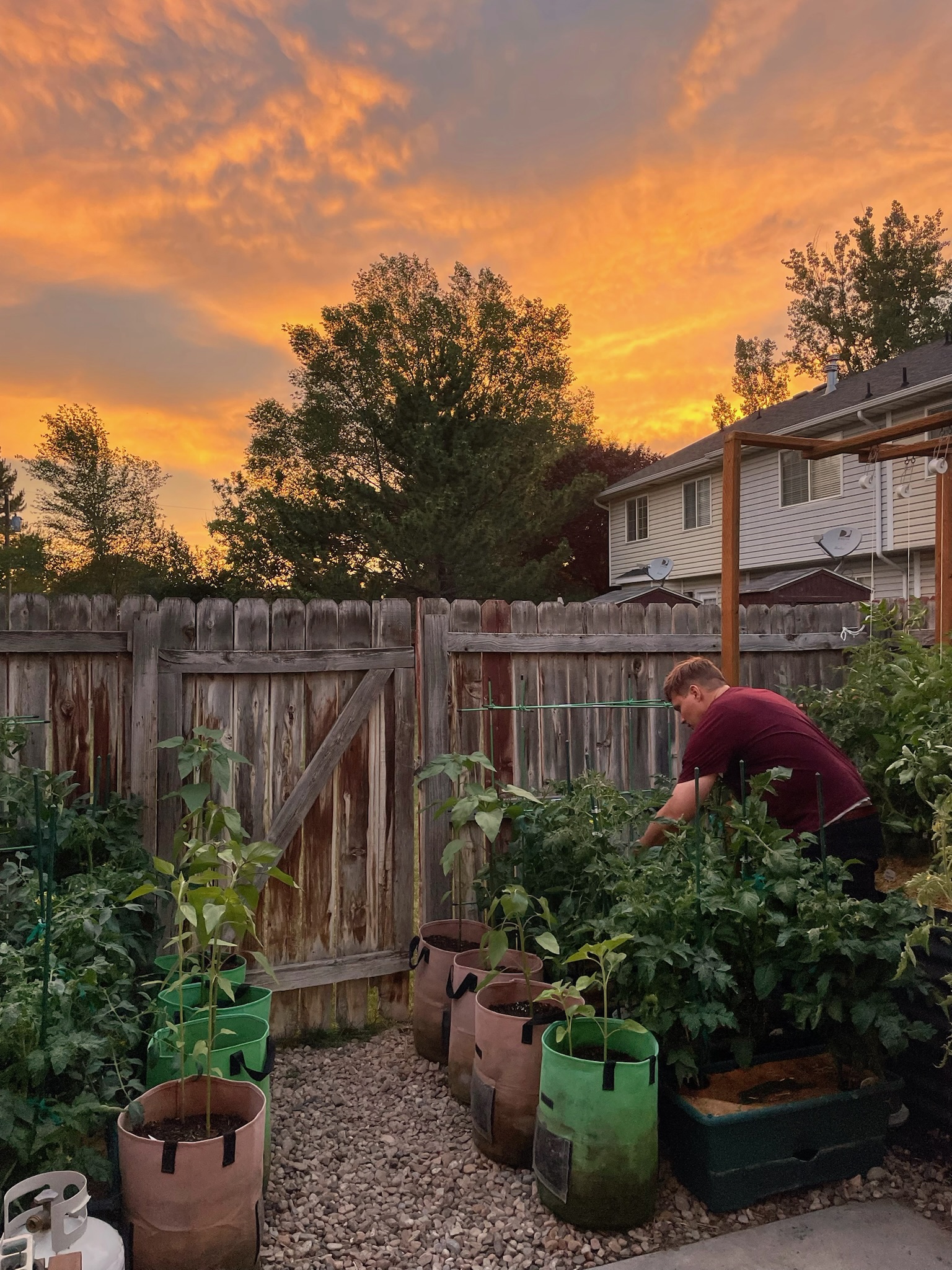



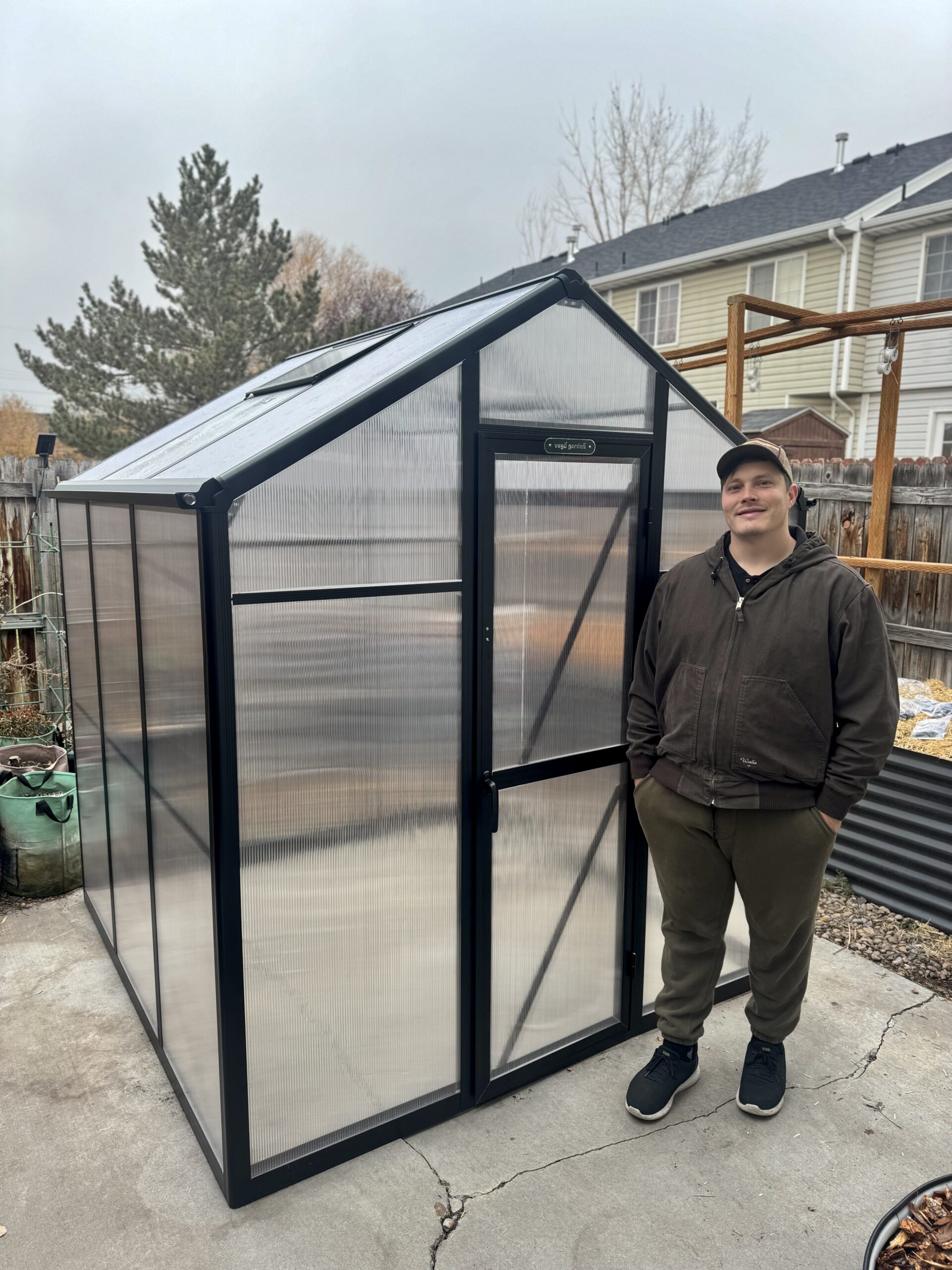

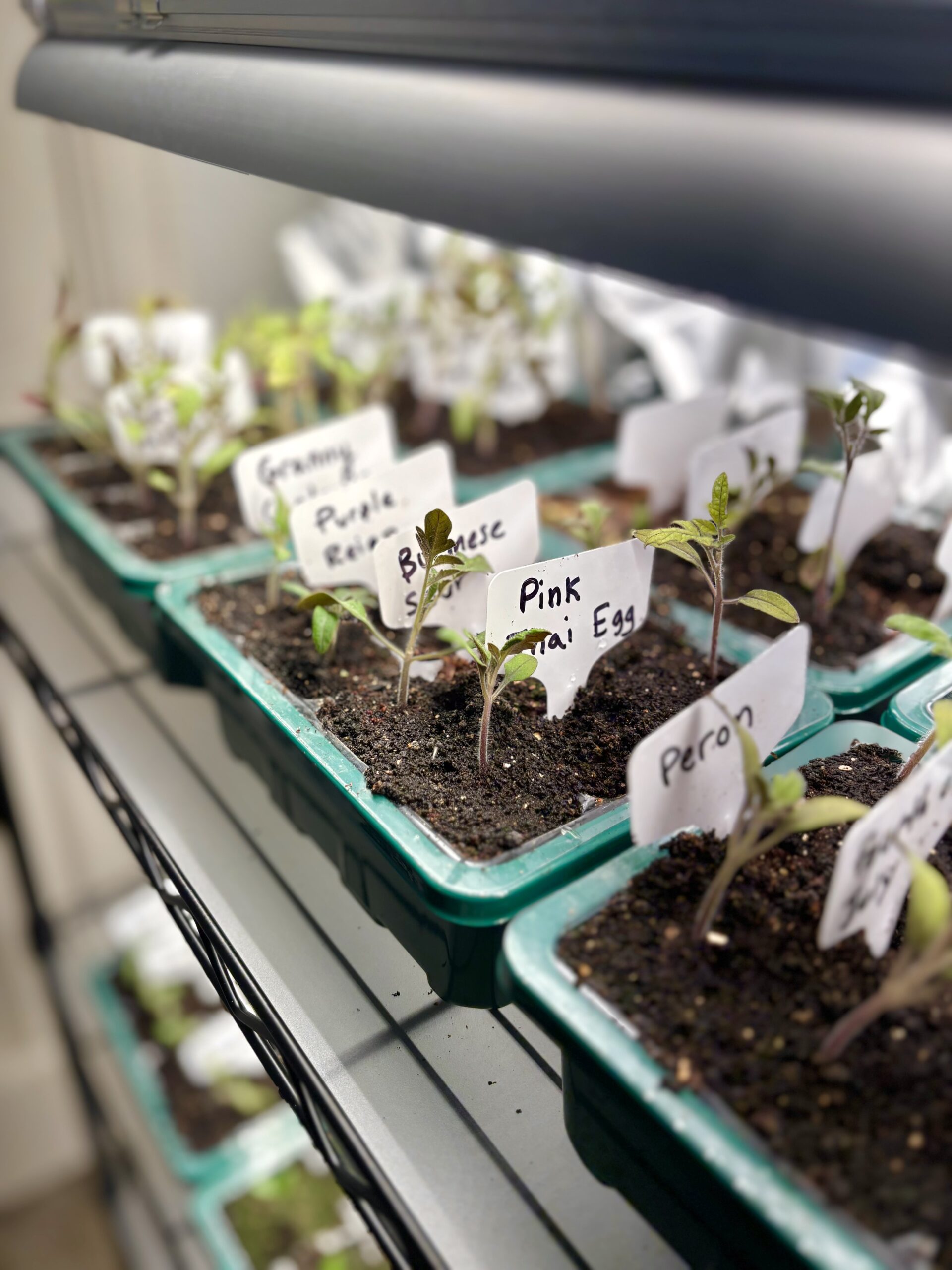
I’ve also heard that growing bush cucumber in between tomatoes can work great!
The companion planting tips made planning my beds so much easier. Thanks!